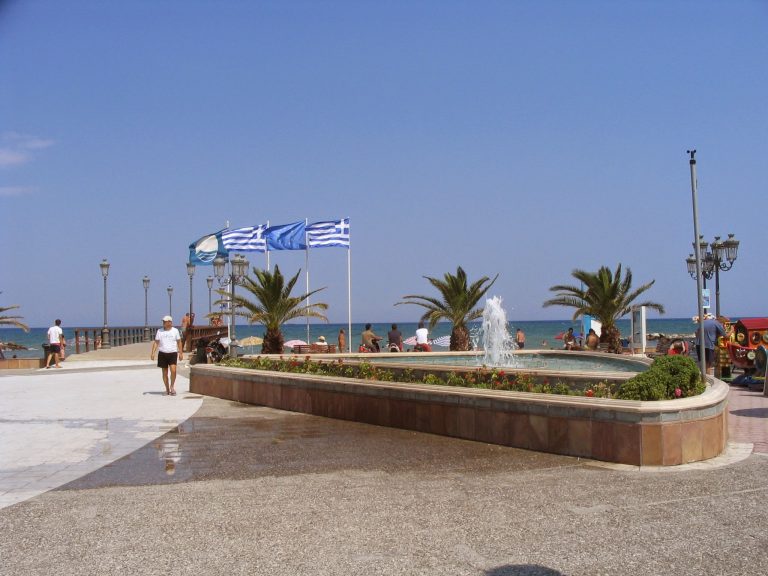The apparent simplicity and design of the Parthenon, a building famous the world over for architectural beauty and harmony, is the temple of the virgin ( in Greek “parthena” ) Athena. It Is built of Pendelic marble in the Doric Style on the same site as two previous temples. It took 15 years to build ( 447-432 B.C. ).
Temple of Athena Nike
The delicate and graceful structure to the right of the Propylaea ( the monumental entrance to the Acropolis ) is the small temple of Athena Nike, also known as the temple of the “Wingless Victory”, built in the 5th century B.C. to commemorate the Greek victories over the Persians. Its frieze depicts scenes from the battles. In this small temple, the Athenians paid homage to Athena Nike without wings, so that she might not fly away from Athens.
The Erechtheio
The Erechtheio is distinguished for the stately magnificence of the Caryatids, the young priestesses who support the temple’s roof with their heads. The Erechtheio was a temple dedicated to the mythical hero-king Erechtheus ( who was later identified with Poseidon ). The Athenians were told that in this place Athena and Poseidon contested for the protection of Athens. Athena won, by producing from the earth an olive tree.
The Acropolis Museum
The Museum stands in the southeastern corner of the Acropolis and houses priceless archaeological finds kept In chronological order, starting with the Archaic ( 800-600 B.C. ), and going to the Classical ( 500-400 B.C. ), Hellenistic ( 300 B.C. ), and Roman periods. Among other outstanding works of art housed In the Museum’s 9 rooms are sculptures and sculptured reliefs from the pediments, frieze, and metopes of the Parthenon, the Erechtheio, and the Temple of Athena Nike. Also on display is the unique collection of the «Kore» statues ( young girls with the characteristic Archaic smile ).
Room II exhibits the famous «Moschophoros», a man bearing a calf on his shoulders. This Is an exceptionally fine work, noted for its composition and elasticity of form.
In-Room V are pediment figures of the «Gigantomachla», or Battle of the Giants from the old Temple of Athena, built by the Pelslstratlds. More works of the so-called «Severe Style» are on display in Room VI, among them a sculptured relief showing a «Contemplating Athena» who seems absorbed in her thoughts as she is resting her head on her spear. The most characteristic of works belonging to the «severe» style is the «Kritias Boy», and the “blond boy”, so-called because of the yellow color of the hair.
In-Room IV are the majority of the «Kore» statues, among them the «Peplos Kori», so-called from the girded Dorian peplos (mantle) she wears over her chiton (a long woolen tunic worn in ancient Greece). The statue Is famous both for its facial expression and Its original colors.
Theater of Dionysus
A theater of ancient Greek drama where the plays of the great dramatists ( Aeschylus, Sophocles, Euripides, Aristophanes, Menandrus ) were first presented. It lies at the foot of the Acropolis, to the south, next to the “Sanctuary of Dionysus”. Originally the theater had wooden seats which were replaced by seats of stone in 342-326 B.C., much in the form we see today. It could accommodate some 20,000 spectators in 78 rows of seats. The first row consists of 67 marble «thrones», where the high officials sat ( priests, leading citizens, notables ).
The orchestra, the open semicircle between the stage and the audience, was rebuilt by the Romans. They organized gladiatorial performances as well as mock naval battles in this theater.
Odeum of Herod Atticus
This theater at the foot of the Acropolis was built in the 2nd century A.D. by Herodes Atticus as a memorial to his wife Pegilla. It is in the typical form of an ancient Roman Theater with a seating capacity today of 5,000 spectators. The seating was restored in 1950-1961. Originally it was used for musical and drama performances as well as for contests. Today it is the main theater of the Athens Festival presenting each summer concerts, recitals, musical, and drama performances.
Athens Museums
The main museums of Athens are the National Archaeological, the Byzantine, and the Benaki Museums. There is also the Acropolis Museum, the National and Historical Museum, the Museum of Greek Popular Art, the National Picture Gallery, the Theatrical Museum, the Geological and Paleontological Museum, and others.
The National Archaeological Museum
It is one of the most important museums for ancient Greek art internationally. Unique in the world is its Mycenaean collection ( gold jewelry, precious stones ), the collection of Cycladic art ( statuettes and idols ), its collection of Archaic art ( the famous statues of young men named “Kouroi” and pottery ), and the recently discovered superb frescoes and other finds from Thera ( Santorini ). The rich collection of vases covers the periods, from before the Geometric era, to the 4th century B.C. There is also the Epigraphical Collection as well as the Numismatic Collection of some 300,000 ancient coins.
The Byzantine Museum
It is housed in what was once a mansion of Florentine architecture, built-in 1848. It displays the features of Byzantine art and objects for use in churches, including works of art from Byzantine and post-Byzantine sculpture, paintings, small handicrafts, icons, and frescoes.
Many of the exhibits come from churches that formerly stood in Athens or its surrounding regions.
Benaki Museum
This was founded in 1930 by Antony Benaki. It is lodged in a neoclassical building and contains a rich and interesting collection of Ancient Greek and Byzantine art, jewelry, Oriental exhibits, and much Chinese porcelain from the Neolithic Age to the 18th century A.D. Also on display are textiles, embroideries, carpets, weapons from the Greek War of Independence, and jewelry of Coptic, Muslim, and Turkish art.
.
